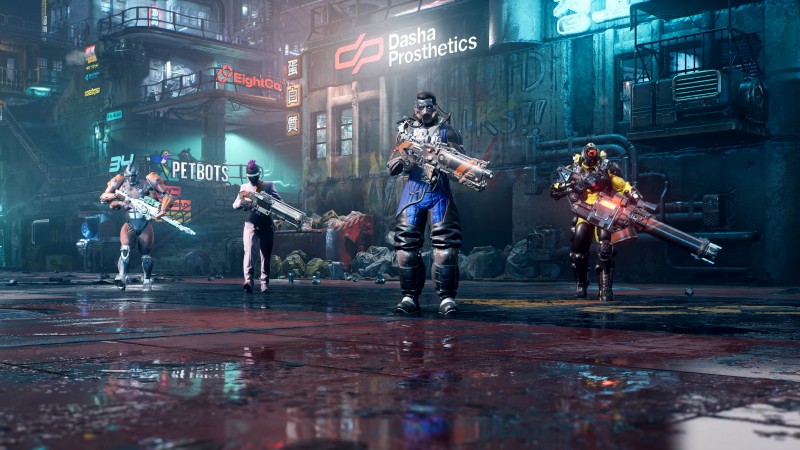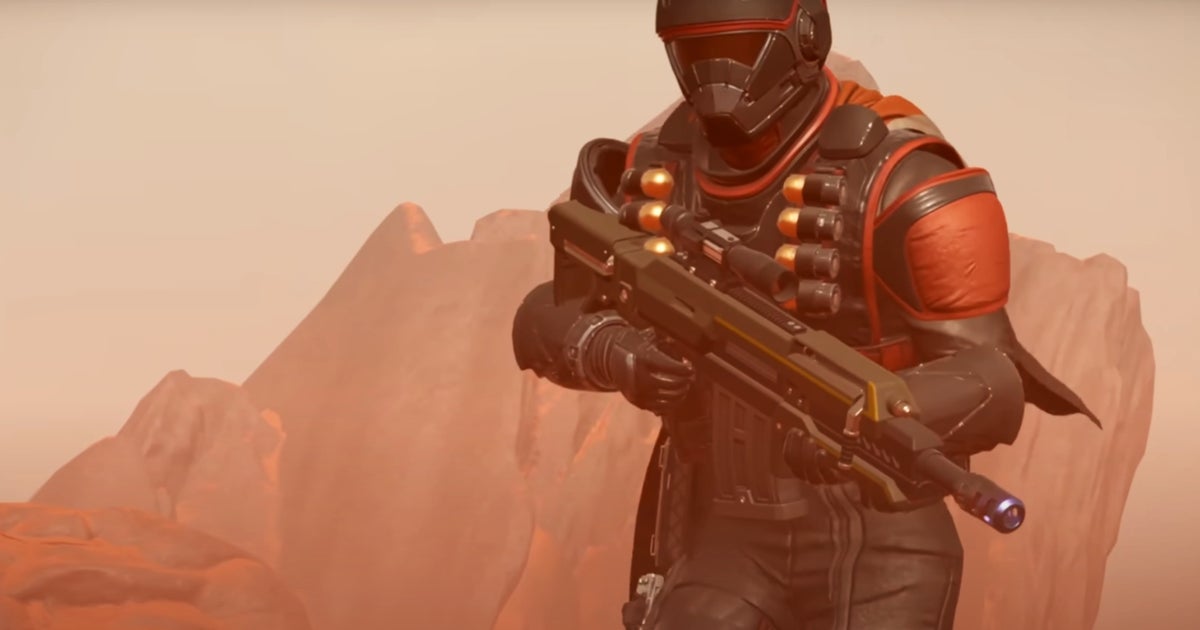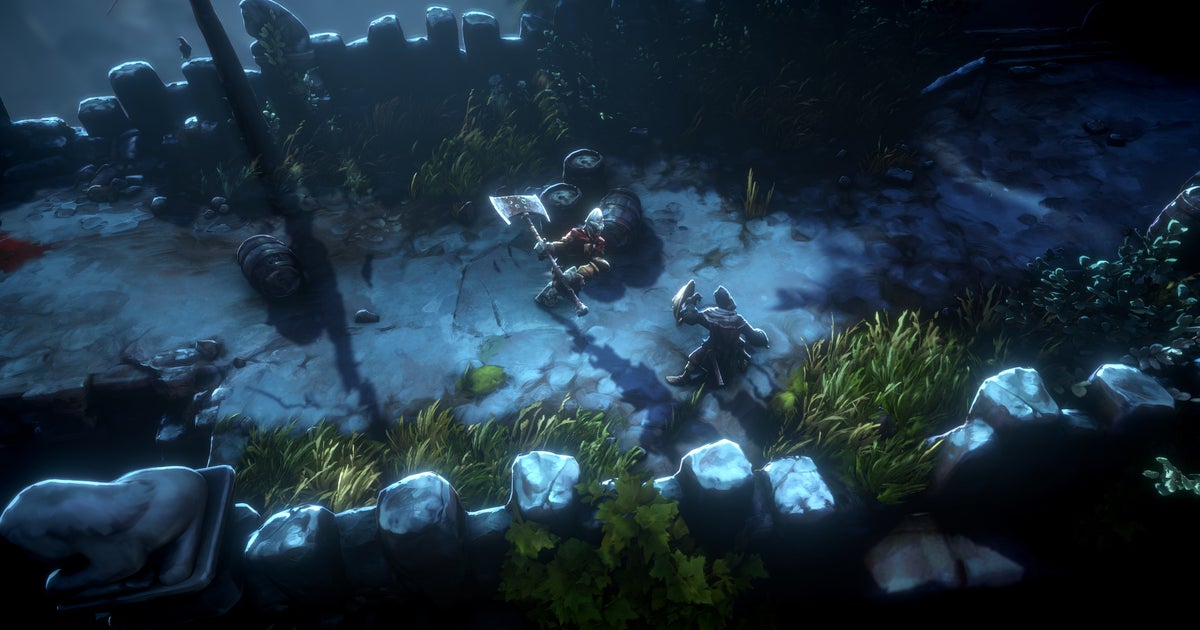From the iconic works of Philip K. Dick to the groundbreaking tabletop RPG by Mike Pondsmith, fans of the cyberpunk genre will know the theme of characters in search of an identity and purpose. The Ascent suffers a similar identity crisis in its attempts to break away from dungeon-crawling RPGs and twin-stick shooters, but it never reaches the heights of either genre. This pointlessly fun co-op experience features bombastic shooting, captivating cybernetic skills, and a visually immersive world to wreak havoc.
The Ascent takes place in the tech-obsessed world of Veles, controlled by insane corporations, and players control a contract worker who becomes entangled in a secret as he struggles for freedom. While I like the cyberpunk genre, The Ascent’s sizzling narrative contains all of my least favorite tropes: incessant expletives, human rights abhorrence, and a deeply gritty world. These tropes aren’t inherently bad when handled with nuance, but the main story is never immersed in anything substantial, which puts these dark themes in the limelight rather than in meaningful commentary. Combine that with lots of confusing jargon and lore, and I wanted to skip the dialogue to get back to what the game does best: turning you into a cybernetic warrior.
Combat is The Ascent’s main strength. The moment-to-moment shooting is exhilarating, with waves of diverse villains heading towards you at virtually any moment. Developer Neon Giant also adds to the fun with a diverse weapon inventory and some really awesome expansions and tactical weapons that can blow up enemies. One of my favorite moments was blowing corporate thugs away with a rocket-spitting Gatling pistol and then taking them down with a devastating blow of energy.
While most of the fights made me happy (if not overwhelmed, but more on that later), the fight gets a bit monotonous as the game progresses. Through an upgrade provider, I started finding my favorite weapons and upgrading them, which outperformed most of the loot drops and made them largely irrelevant. That lack of variety extends to your armor as well.
The Ascent is a flat RPG experience with stats that don’t always feel right on target. I’ve always been grateful to have points to boost my health and energy levels, but I found some of the other categories and even the armor to be irrelevant outside of the general protection buffs. It’s hard to tell which specific attacks you want to protect yourself from in the first place. I rarely paid attention to attributes like fire protection because I could usually storm through enemies with the right tactics and reinforcements. This was especially true when playing with others when the on-screen commotion is extremely difficult to follow.
The best way to experience the rise is in co-op. Up to four players can play most of The Ascent’s 15-20 hour story. The bombastic fights are easier to handle with a team by your side, and the fight starts singing when you’re synced with explosive weapons and chaotic expansions.
While co-op is the highlight, co-op play still has an abundance of annoyances. A limited pool of health losses helped in the demise of my team as the number of HP shots doesn’t seem to scale with the larger number of players. Finding your partners in the world is also difficult as the player indicators merge with the rest of the map. This problem is exacerbated by a surprisingly large margin. My other complaint is about how progress is being handled. I jumped into a coworker’s game for a couple of hours only to find that my progress was completely gone from not hosting the game.
Co-op is the main draw, but solo players shouldn’t despair. I spent half of my time on my own and I still enjoyed the experience with some limitations. It’s easier to gain health, but I got frustrated in many encounters as I was quickly overwhelmed by the sheer number of enemies – it seems the game was balanced with a co-op in mind. These encounters aren’t impossible, but you need to play smarter and plan your augmentations rather than the normal running and shooting.
The game’s other great strength lies in its presentation. Neon Giant has injected an incredible amount of detail into the world. Every corner of Veles is disgusting in the best sense of the word when its residents throw garbage on the shabby metal plates of the expanding megacity. The game’s lighting is just as lovely, if a little neon soaked on the eyes at times. The camera work is also impressive and moves cinematic and captivating. Finally, the music hits a high point, with clear recalls to iconic science fiction of the past, such as Vangelis’ work on the original Blade Runner film.
The world of Veles is worth exploring, but it can also be a chore. I was grateful for the fast travel points but it still takes too long to get from point to point. I also found my co-op partners and sometimes had the same goal, but our tracker sometimes took us in completely different directions. It also didn’t help that we constantly encountered groups of overpowering villains who instantly tore us apart. Neon Giant does a great job of rewarding curiosity with loot, but I’ve explored less over time for fear of another ambush and off-screen game.
The Ascent has problems, but those problems don’t detract from my overall enjoyment of the game. I’m not going to write my thesis on his commentary on capitalism, but I will fondly remember my co-op sessions tearing me through this cyberpunk world. That being said, the flat RPG elements, the lack of a meaningful narrative, and the frustration of exploring were constants that really dragged the experience down. Neon Giant has laid a solid foundation to build on and I hope we can see future parts grow into something really worthy of promotion.








